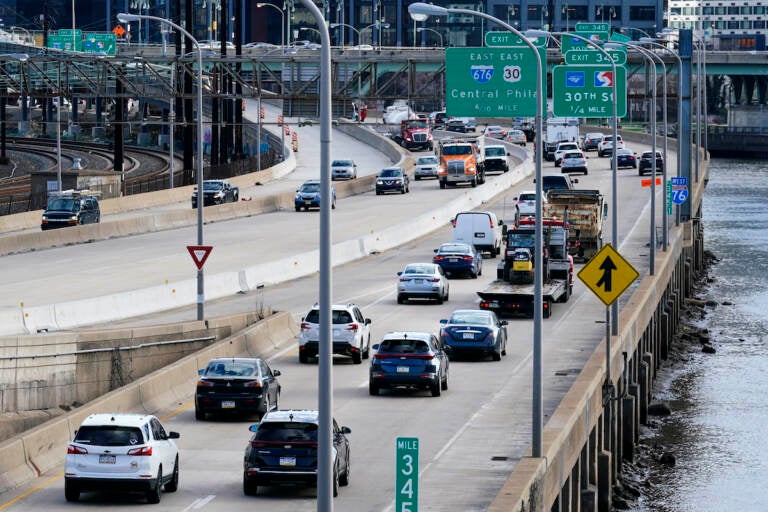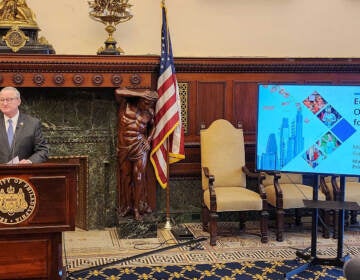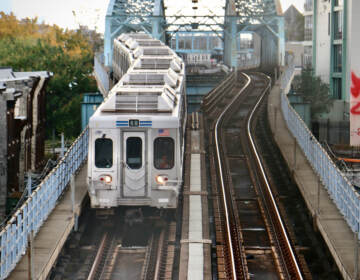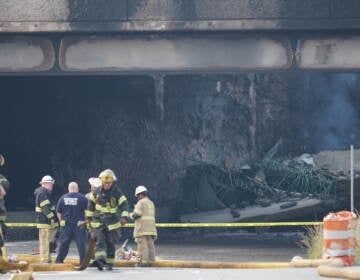Philadelphia ranks among the top 10 most congested traffic cities in the world
Yeah, it’s rough out here. The 2022 Inrix Global Traffic Scorecard ranked Philly above Los Angeles and Washington D.C. for traffic congestion.
Listen 1:09
File photo: Morning traffic moves along Interstate 76 in Philadelphia, Monday, March 29, 2021. (AP Photo/Matt Rourke)
This may come as no shock to locals, but Philadelphia’s traffic isn’t just some of the worst in the country. The city ranks among the most congested roads in the world, according to a new study from Inrix.
The 2022 Inrix Global Traffic Scorecard ranks Philly eighth in the world for the most congested traffic, which is five spots higher than last year’s list — and beats out other major U.S. metropolises like Los Angeles, Miami, and Washington D.C.
The scorecard compared travel delays, collision trends, and last-mile speeds based on commuting patterns within each metro area observed. Commute times were calculated by looking at the time for people to get to and from major employment centers within an urban area from surrounding commuting neighborhoods.
It found that the average Philly driver spent roughly 114 hours in traffic in 2022. Time loss was calculated by analyzing peak speed and free-flow speed data for the busiest commuting corridors and sub-areas as identified by data density.
Researchers also determined the typical commuter lost $1,925 dollars due to rising fuel prices, as well as various supply chain issues over the past year. The congestion is estimated to have cost the city roughly $4.5 billion.
Economic costs were calculated based on a metric used by the U.S. Federal Highway Administration to determine the value of travel time, which adjusted for inflation amounts to $16.89 per hour in the U.S.
While drivers had to deal with more traffic compared to last year, it was still 20% less than the average pre-pandemic. Trips to downtowns across the U.S. are on the rise, including a 1% increase in trips to Center City.
The analysis also notes that commuting doesn’t just involve cars, but includes public transit as well. Transit ridership nationwide fell by more than 50% following the COVID-19 pandemic, but recovered 33% of those losses over the last year. According to SEPTA’s FY 2021 Revenue and Ridership Report, ridership fell 50% below Fiscal Year 2021 and 61% below pre-Covid. Transit ridership was forecasted to reach 82% and Regional Rail 66% of the pre-COVID baseline by June 2022.
WHYY is your source for fact-based, in-depth journalism and information. As a nonprofit organization, we rely on financial support from readers like you. Please give today.






